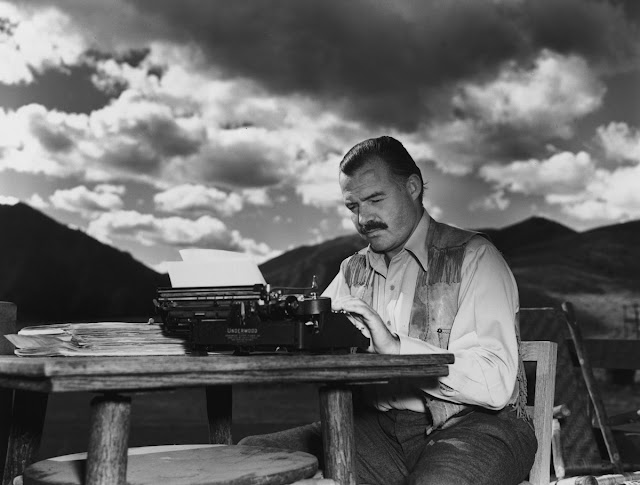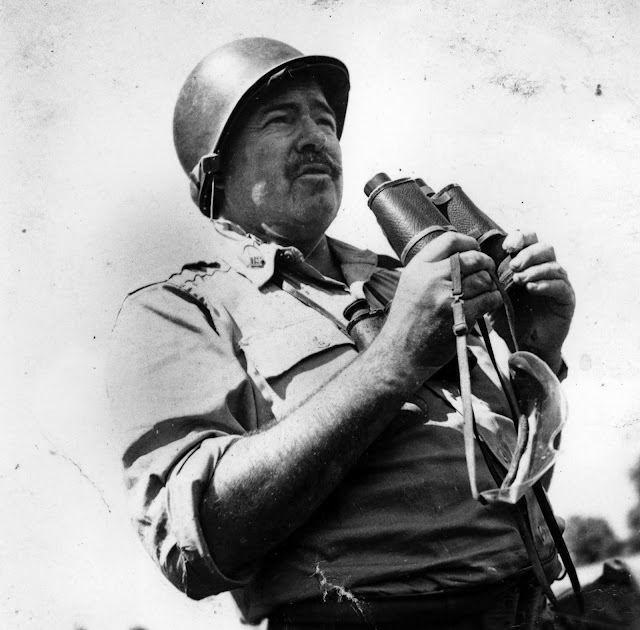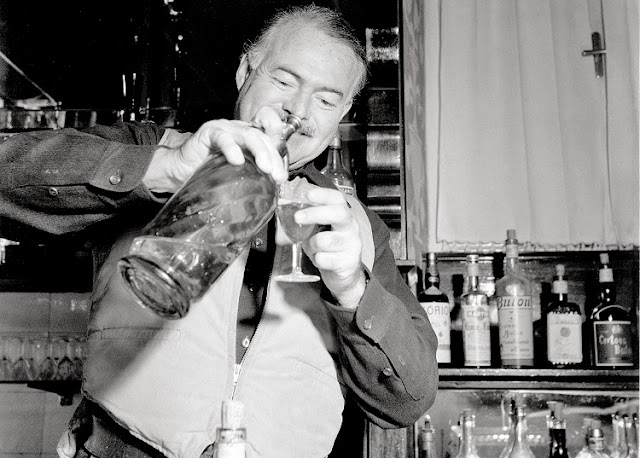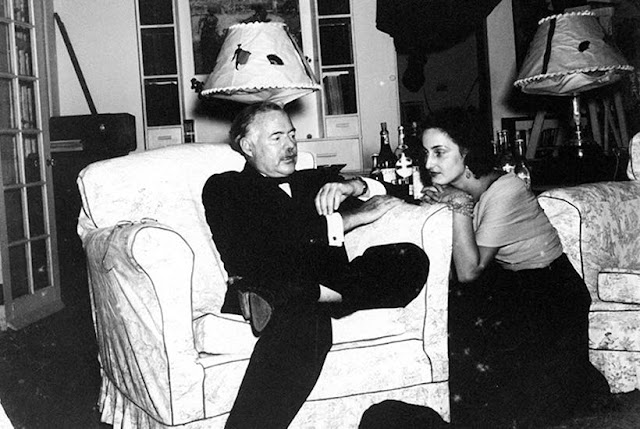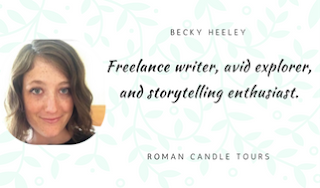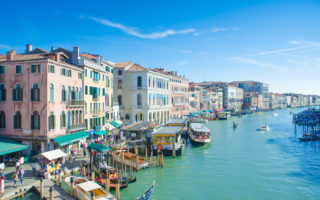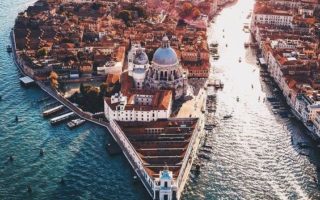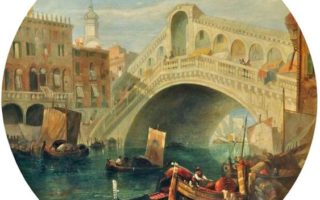Ernest Hemingway And Venice
Short, potent sentences, heavy drinking, revolutionary war writing, severe mood swings, avant-garde intellect, scandalous flirtations, and an adventurous spirit are all associated with the iconic American writer, Ernest Hemingway, but what about Il Bel Paese? From the moment he first stepped into Italia during World War I, ‘The Beautiful Country’ of Italy deftly shaped how Hemingway wrote and engaged with the world. Years after the war, Venezia enchanted him and one of the Venetian islands became his Italian home. Venice, also known as the ‘City of Canals’ or ‘The Floating City,’ should be included as one of the most important associations with Hemingway.
Born into an all-American family in the summer of 1899 in Illinois, Hemingway did not grow up always dreaming of Italy. However, at eighteen years old, he did see World War I as an exciting chance to get away from his parents and see the world. His time in Northern Italy during WWI led him to pursue creative inspiration in Italy and sparked a desire for adventure. From then on, he became an avid world traveler and thrill-seeker. Hemingway lived in many foreign cities in his lifetime, including Paris, France and Havana, Cuba, as well as Venice.
If interested in other gregarious, mischievous, and larger than life personalities associated with Venice, read The Many Colorful Personas of Giacomo Casanova. Casanova was born and lived in Venice. Now, his name, Casanova, is associated with galavanting and womanizing ways.
Italy, War, and Heartbreak
World War I began in July of 1914. Italy entered the war in 1915. In 1917, when Hemingway was just eighteen, he tried to enlist in the military, but was turned away because he failed the eyesight test. Determined to join the war, he signed up with the American Red Cross as a volunteer. The Red Cross sent Hemingway to the Italian front in the northern region of Veneto. Veneto is Venice’s region. Before being stationed in Schio in Veneto, Hemingway trained in Milan in the neighboring northern region of Lombardy. Despite being in Schio, which is only about sixty-six miles (106 kilometers) from Venice, he did not go to Venice during this period.
With the Red Cross, Hemingway drove ambulances and delivered goods to soldiers, which was a perilous role. In July of 1918, Hemingway was struck by a mortar bomb as he was delivery chocolates and cigarettes to soldiers. Despite being badly injured, with more than 200 pieces of shrapnel lodged in both legs, he helped rescue other wounded men. Because of his valiant efforts, he was awarded an Italian Silver Medal for Bravery. From Schio, he was transported to a hospital in Milan to recover, where he stayed for six months.
It was in the hospital that the young Hemingway fell in love for the first time. She was an American nurse of German descent, named Agnes von Kurowsky, who was six years his senior. Madly in love, Hemingway proposed to her and she accepted, only to break off the wedding plans not long after to go off with an Italian officer. By the end of WWI, in the November of 1918, Hemingway was not only utterly heartbroken, he was physically and psychologically shaken from the war. This was Hemingway’s traumatic, but eye-opening introduction to Italy and a world that was capable of violence and destruction. Like any true storyteller, he felt compelled to write about it.
Using his long recovery period, Hemingway began writing and returned to the United States. After two other novels, he published A Farewell to the Arms, which came about from his harrowing and exhilarating days during WWI. Published in 1929, the book is seen as semi-autobiographical, as it follows the story of a young ambulance driver in Italy during WWI, who is seriously injured, in ardent love with an English nurse, and grappling with the difficult demands and hardships of war.
Hemingway’s First Time in Venice
Although Hemingway, visited Italy in 1923 to ski in the Dolomites, he did not spend an extended amount of time in Italy until 1948. This was thirty years after WWI. Read more about Cortina d’Ampezzo, where Hemingway skied, and The Best Places to Ski and Snowboard in Italy here. From 1925 to 1945, Italy’s fascist dictator, Benito Mussolini was in power, which made it very difficult for Hemingway to visit. Mussolini banned all of Hemingway’s writings, as well as other prominent American books. In the early forties, Hemingway along with the rest of the world was caught up in World War II. He began feeling the freedom to return to Italy after WWII ended in 1945.
After decades away, Hemingway felt an intense pull to return to Italy, where he held intense, vivid memories. He felt that he had inspiration for more novels there; they were lying at every piazza corner and in every Italian bar.
In 1948, Hemingway stayed in Venice’s glamorous Gritti Palace. Gritti Palace has also hosted other celebrated figures, like Peggy Guggenheim, Elizabeth Taylor, and Richard Burton, and is still known as one of Venice’s most alluring luxury hotels. Even when Hemingway was in Venice and not staying at Gritti Palace, he came often to dine and socialize.
At this time Hemingway began to frequent Harry’s Bar and befriends the owner Giuseppe Cipriani, a warm local man who took much pride in his establishment. At Harry’s, Hemingway could observe and meet people, while eating, drinking, and writing in style at his table in the corner. Although Hemingway was Harry’s Bar most celebrated guest, perhaps because he went so frequently, it is also known for entertaining famous creative characters like Charlie Chaplin, Alfred Hitchcock, Truman Capote, Orson Welles, and Woody Allen. The owner, Ciprani invented the ‘Bellini,’ a light, sparkling cocktail made with Prosecco and fresh white peaches, which is still served at Harry’s Bar. Hemingway was partial to Harry’s Montgomery cocktail, which was made with gin and a touch of vermouth, as well as Venice’s divine wines.
Seduced by Venice’s excellent wine and food, Hemingway soon craved more solitude and invigorating stimulation to write, so he moved to the Venetian island of Torcello. On Torcello, Hemingway had the chance to hole himself away to write. He also was able to engage in more active, adventurous pursuits, like jetting across the Grand Canal in boatsand hunting game with his Venetian friends. On this tiny island, Hemingway wrote another novel, Across the River and into the Trees.
Hemingway Captivated by a Venetian Muse
Hemingway’s Across the River and into the Trees, which was published in 1950, was the one most obviously inspired by the magic of Venice. Set in the Floating City, it describes a colonel desperately trying to recover from the atrocities of war, as he falls for a young, beautiful, aristocratic Venetian woman. Hemingway wrote this during his extended stay in Venice. The plot mirrored his time in Venice; he also fell in love with a Venetian noblewoman. Noble by birth, her name was Adriana Ivancich and she was thirty years younger than Hemingway.
When he first saw eighteen-year-old Adriana during a hunt with friends, Hemingway described a love that felt like an electric shock. Despite being married, she became his muse. He loved and cared for her for the next six years, like a suitor and a father figure. Initially, Adriana was impressed by the attentions of a famous writer, especially one who had all of Venice gossiping. Overtime, she grew to love his friendliness and intelligence. They soon became companions and romantic Venice was the perfect backdrop for their relationship. Read this guide to Valentine’s Day in Venice for tips on planning a trip to Venice with a parter.
Adriana is credited with fueling Hemingway’s most creative period, which was when he wrote The Old Man and the Sea. Published in 1952, the book helped him win the Nobel Prize in Literature in 1954. It was the last novel that Hemingway completed and published before his sad death by suicide in 1961.
Venice as Hemingway’s Home and Eternal Inspiration
In 1954, Hemingway and his fourth wife, returned to Venice to recover from a terrible plane crash in Uganda. Newspapers claimed that Hemingway chose to return to Venice to be cured by the scampi, a delicious type of lobster and vapolicella, a red wine from northern Italy. With his life in danger, it seemed that Hemingway agreed; he believed Venice’s diet and lifestyle had some healing powers and wanted to recover in his adopted home.
Hemingway rose to literary fame through his Italian experiences, but it was Venice that solidified Italy into Hemingway’s legacy as a writer and artistic genius. The intoxicating Venetian lifestyle, delicious food, copious drink, and stimulating local people influenced Hemingway’s collection of novels and short stories and assured his place among the literary greats. Hemingway is still revered as one of the most revolutionary novelists in the twentieth century. Like Hemingway, go to Venice and discover the city’s allure and potential for inspiration.
From all of us at Roman Candle Tours, enjoy exploring Venice and the relationship that Hemingway had with this enticing city connected by boat-filled canals, countless bridges, and meandering streets. Read A Practical Guide to Transport in Veniceto see how to get around the City of Canals today and How to Visit Venice on a Budgetfor tips on how to save money when going to Venice.
If you liked this article, read also “The Many Colorful Personas Of Venice’s Giacomo Casanova”

